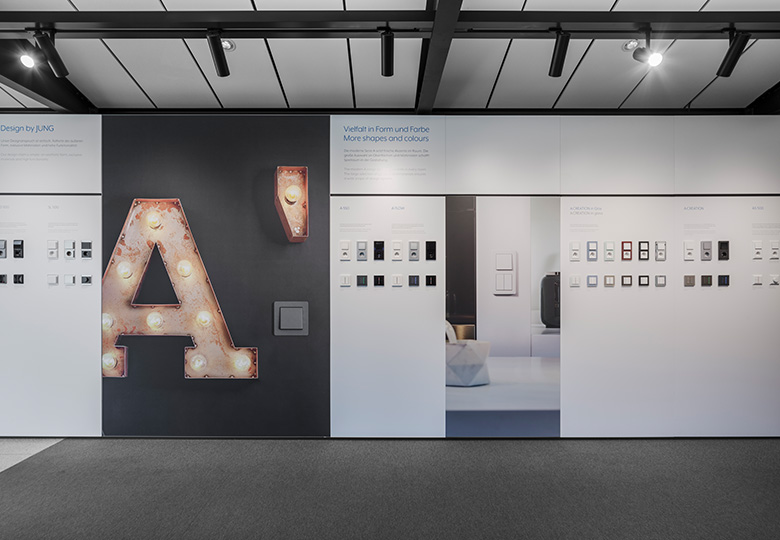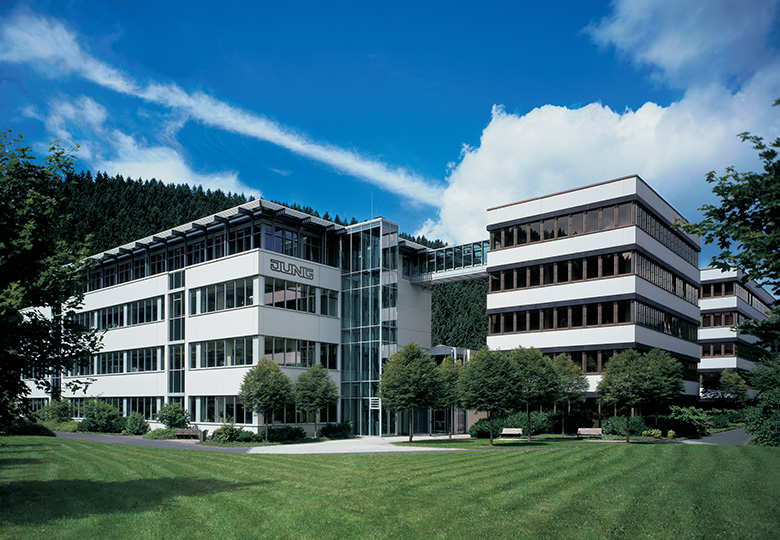Using ORBIS PCC directly in SAP: JUNG is standardizing and speeding up product design cost estimate and quotation costing
Sectors: Electro and electronic industry
Processes: Finance & Controlling
References: Jung
Albrecht JUNG uses the ORBIS Product Cost Calculator (ORBIS PCC) to carry out product design cost estimate and quotation costing in the SAP ERP system as part of an integrated and system-supported process. Costing is thus carried out based on standardized data – “single source of truth” being the key phrase here – and is completed four to five times faster. So, nowadays, up to 20 quotation costings are created per day as opposed to five previously. This – and a clear view of manufacturing cost trends at all times during product development – are critical competitive factors.
Sector: Electrical installation technology and building systems technology
Headquarter: Schalksmühle
Products: Light switches, sockets, solutions for lighting and shading control and temperature regulation, smart home and KNX systems
Employees: around 1,700 worldwide
Website: www.jung-group.com
Light switches and sockets from Albrecht JUNG (which is based in Schalksmühle in the Sauerland region of Germany) do their job reliably and to a high quality standard and usually last for years in a wide variety of buildings: detached houses, hotels, hospitals, care facilities, medical practices, administrative buildings, and cultural and educational establishments. In addition to high-quality designer switches in a wide variety of colors, the global company also offers a wide range of lighting, shading and temperature control solutions, not to mention smart home systems and KNX building technology.
True to its motto “Progress as tradition”, JUNG is continuously expanding and optimizing its portfolio with proprietary innovations and manufactures all of its products exclusively in Germany. This has always been the cornerstone of the company’s economic success and international growth. JUNG is now active in around 70 countries with 21 subsidiaries and agencies, and generated sales of more than EUR 300 million in 2022 with 1,700 employees.

Product costing: a competitive factor
However, standardized, efficient and transparent business processes in all areas are also an important key to successful operation on the market in the future. There was room for improvement in this regard with respect to the costing of new and further product developments, not to mention quotation costing for customized items. Until recently, JUNG performed the associated processes outside the SAP ERP system – an approach that was both time-consuming and cumbersome. Product design cost estimate was carried out in special Microsoft Excel templates, while Excel and, in some cases, paper printouts of SAP screenshots were also used for quotation costing.
Image: © Henrik Schipper
The responsible individuals were therefore looking for a costing tool they could use to carry out costing, including versioning and documentation, directly in SAP ERP as part of a completely system-supported process and in such a way that it was traceable at all times. The tool also had to offer the option of changing SAP data, carrying out costing without SAP master data, and adding or deleting calculation items as flexibly as with Excel.
Standardized processes – but up to five times faster
They found what they were looking for in ORBIS SE. Its ORBIS Product Cost Calculator (ORBIS PCC) integrates seamlessly into the existing SAP ERP system and best met the other requirements. The advantages of product costing in SAP ERP, which is now fully IT-supported with the help of ORBIS PCC, became apparent shortly after going live. “As the tool directly accesses current SAP data – be it material master data, bills of materials, routings, work centers, prices, tariffs, overhead cost rates or exchange rates – we use homogenous data as a basis for uniformly creating costings with a single source of truth in mind,” remarked Hendrik Weber (who works in Technology & Innovation Controlling at Albrecht JUNG).
At the same time, costings are now completed four to five times faster than when Excel and paper printouts were used, since there is no need to manually read out data and figures from SAP and to copy them back and forth. For example, it used to take eight to 15 minutes to replace the assemblies for a small quotation costing. Now, it only takes two to three minutes. So a cost accountant can create up to 20 costings per day as opposed to five previously. “This is definitely a critical competitive factor. The trend in building technology is also moving towards custom products. To create custom products, we have to prepare reliably calculated quotations quickly so we can respond to customer inquiries regarding the feasibility and price of an item as precisely as possible and in the shortest possible time,” added Mr. Weber.

Templates speed up costing too
As templates can be used as a basis for costing similar products in ORBIS PCC, this speeds up and optimizes processes even further. Because every individual item costing created with the add-on – including the associated data – is stored in SAP ERP, this information and, above all else, standard values such as process and milling times or painting costs, can be used as a costing template. Thanks to these speed benefits, the Controlling department can now usually process and complete the costings for customized items, which are created daily, on the same day.
Image: © Albrecht JUNG GmbH
Because all versions of costings are stored in SAP ERP too, it is possible during a comparison to seamlessly trace any changes or deviations in the current version compared to a previous or an original version right down to individual item level. Individual items can also be added or deleted during costing when determining the manufacturing costs of customized items (such as a multimedia connection system). Different colors clearly show added items (green) and deleted items that are still visible (red) in the ORBIS PCC user interface, which makes work considerably easier and improves traceability for the cost accountant.
Keeping a close eye on costs during product development
JUNG also benefits greatly from using the ORBIS tool for product design cost estimate. The additional “Detailed comparison” function makes it easy to monitor manufacturing cost trends throughout the product development process and track them right down to item level. The influence of quantity-dependent scale prices on the manufacturing costs can also be shown with little effort.
Additionally, placeholders can be created in ORBIS PCC as temporary materials and assigned a price for the purpose of costing brand-new materials that do not yet have a material number in SAP – another major plus point. What’s more, JUNG also uses the add-on to cost items that were previously compiled in SAP Variant Configurator (LO-VC) based on configurable materials (KMAT). The result of the LO-VC configuration is automatically incorporated into the tool, so the product structures and prices can be changed quickly and easily if necessary.
Rapid deployment – and below budget to boot
When deploying ORBIS PCC, the individuals responsible relied on ORBIS’s process and consulting expertise for product costing. This, the fact that everyone involved enjoyed a collaborative partnership, the ORBIS experts’ high level of commitment, and their prompt feedback in response to questions or change requests contributed significantly to a quick implementation process that was even below the cost estimate. During this entire process, the time and effort required on the part of internal IT was kept within narrow limits. The end users also learned how to use the costing tool very quickly thanks to its easy-to-use interface, ensuring a high level of acceptance.
Mr. Weber is satisfied: „With ORBIS PCC, which integrates seamlessly into our SAP ERP landscape, we can carry out product design cost estimate and quotation costing as part of an IT-supported, transparent process, using standardized data and, above all else, far faster than before. Since the price was below the agreed deployment costs, the budget left over was used to implement further requirements.“
But JUNG is not content with its achievement. After the switchover to SAP S/4HANA, which is scheduled for 2025, it aims to also create the corresponding SD quotation directly from the costing tool once quotation costing is complete. In the near future, ORBIS PCC’s Excel import function will also be put to more intense use, as will the option of generating material master data, bills of materials and routings directly from the costing, to ease the burden on the cost accountants and speed up the process.

„With ORBIS PCC, which integrates seamlessly into our SAP ERP landscape, we can carry out product design cost estimate and quotation costing as part of an IT-supported, transparent process, using standardized data and, above all else, far faster than before. Since the price was below the agreed deployment costs, the budget left over was used to implement further requirements.“
Hendrik Weber, Controlling Technologie & Innovation, Albrecht JUNG GmbH





